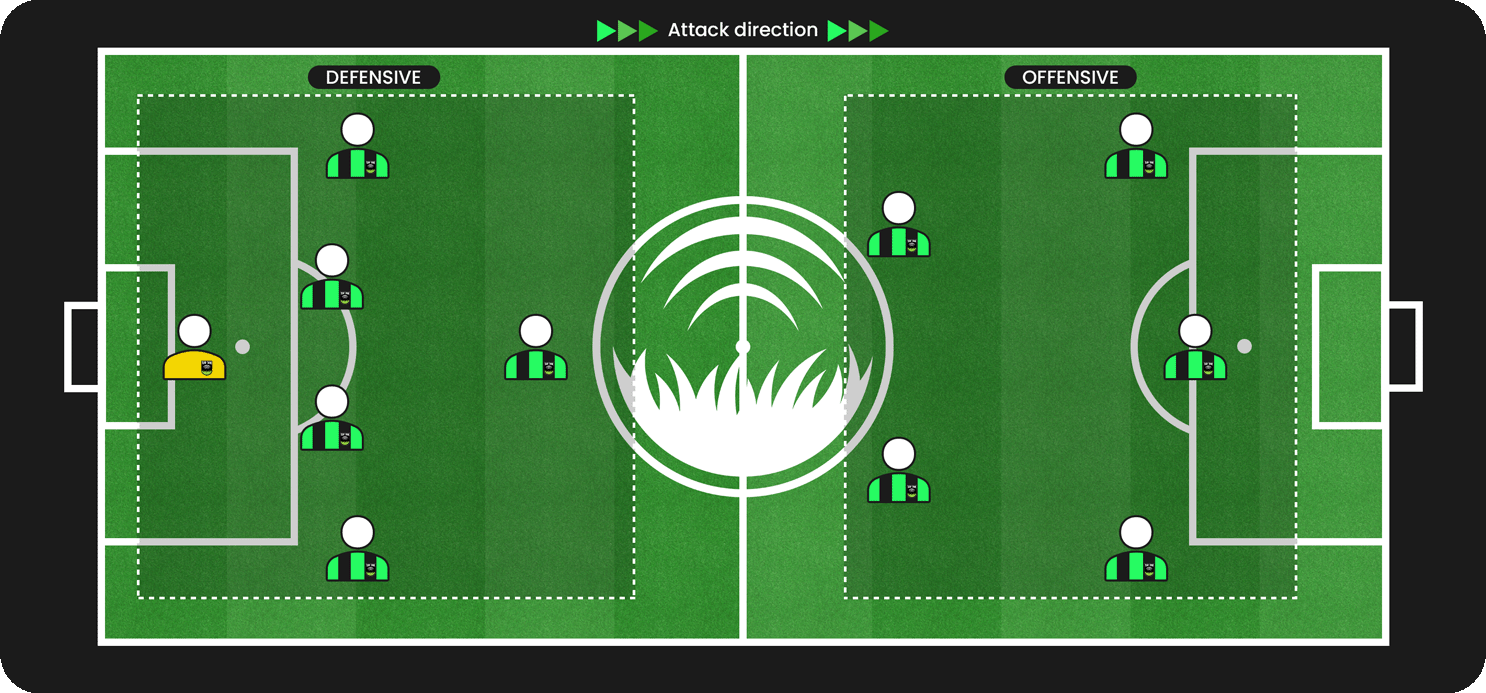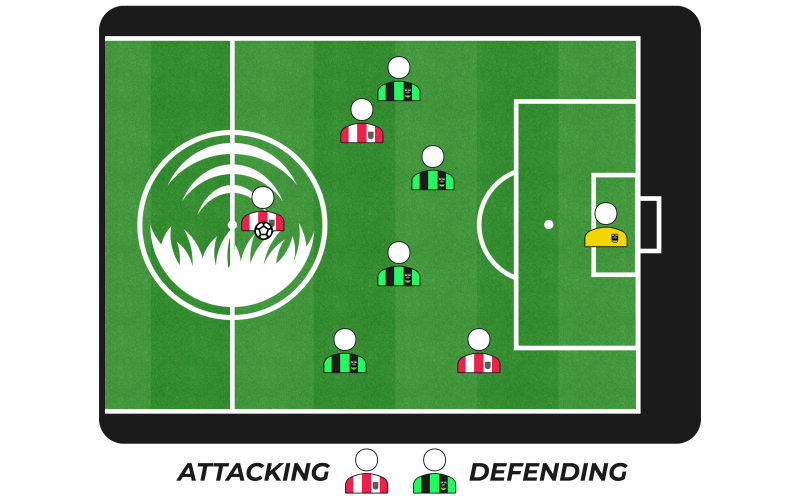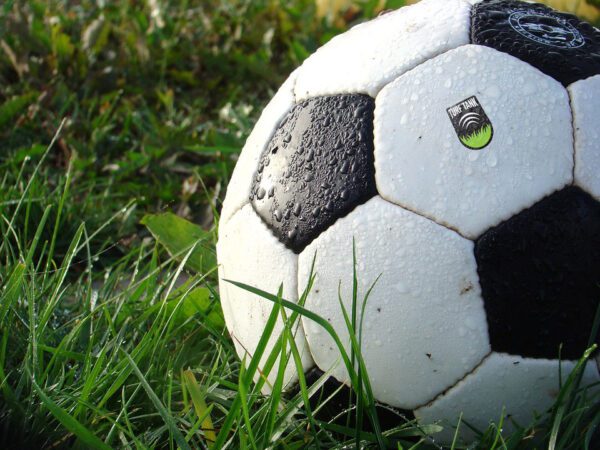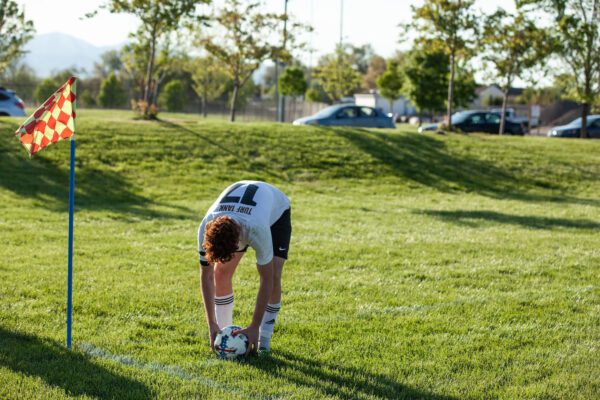Soccer is one of the most popular sports played all over the world, enjoyed by people of all ages. If you are new to this sport, the rules of soccer may seem complicated at first. How do you score in soccer? What is an offside? We’ll answer all these questions and many more to help you understand how soccer is played. If you are ready to start kicking the ball on the field, or simply want to learn more about this sport to better enjoy watching a match, let’s dive right in!
The Field of Play
The soccer field is also known as the pitch and is typically made of grass. The dimensions of a regulation soccer field are between 100 and 130 yards long and 50 to 100 yards wide. The midfield line divides the field in half, and each team defends its own half of the field. There are also lines drawn on the field to show where the ball is out of bounds, known as touchlines. The goal lines are located at each end of the field and are marked with a line across the width of the field. In front of each goal is an area called the penalty area. This is where many of the game’s most exciting plays occur!
How to mark perfect soccer fields that follow rules and regulations
The Players
Each team is made up of 11 players, one of which is the goalkeeper. The other 10 players are split into two groups: defenders and attackers. The defenders typically stay near their own goal to protect it while the attackers try to score goals. There are also midfielders who play in the middle of the field and act as both defenders and attackers.
A team may have substitutes on the bench but the number and frequency of substitutions allowed vary with the type of game being played. For instance, in official matches, only 3 substitutions are allowed.

What is offside?
The offside rule is one of the most misunderstood rules in soccer. To be offside, a player must be in their opponent’s half of the field and closer to the goal than both the ball and the second-to-last defender. This often happens when a player makes a run down the field and their teammate kicks the ball ahead of them. When the ball is played, an attacker in an offside position cannot touch it or they will be penalized. If a player from the offside team receives the ball, play is stopped and a free kick is awarded to the opposing side.
The offside rule prevents players from simply hanging out near the other team’s goal and waiting for a pass. It encourages players to spread out across the field.


The Ball
The ball used in soccer is a round, inflated object that is easy to kick and pass. It is made of leather or synthetic materials and must be between 27 and 28 inches in circumference. The weight of the ball can vary depending on the age and level of play, but it should be between 14 and 16 ounces.
Fouls and Penalties
A foul is any illegal move that results in a player kicking, tripping, pushing, or otherwise harming another player. If a player commits a foul inside their own penalty area, the opposing team is awarded a penalty kick. This is a direct kick from the penalty spot, which is 12 yards away from the goal. The goalie must stay on their line and the kicker can score directly. This is one of the most difficult situations for a goalie because they have very little time to react to the shot.
If a player commits a foul outside of their own penalty area, the opposing team is awarded a free kick. The team gets to choose where to place the ball and which players will kick it. They can try to score directly or they can pass the ball to a teammate.

Throw-Ins
A throw-in is awarded when the ball goes out of bounds over the touchline. The player who last touched the ball throws it in from the point where it left the field. Both of their feet must be on or behind the touchline and they cannot take more than one step before releasing the ball. The ball must be thrown with both hands over their head and it must go into the field of play. If the ball does not enter the field of play or is not thrown correctly, the other team gets to throw it in.

Corner Kicks
A corner kick is awarded when the ball goes out of bounds over the goal line (but not into the goal) after being touched by the other team. The ball is placed in the corner of the field and the offensive team gets to kick it into play. The defensive team must stay at least 10 yards away from the ball.


Goal Kicks
A goal kick is awarded when the ball goes out of bounds over the touchline after being touched by the other team inside their own penalty area. The ball is placed inside the corner of the penalty area and the defensive team gets to kick it into play. The offensive team must stay outside of the penalty area until the ball is kicked.
Importance of soccer rules for club managers
As we can see, there are a lot of rules for soccer, and for those managing sports facilities, for whom it is crucial to be aware of all of them, it can get overwhelming. One way to be on top of these issues is to ensure you get the right tools at your facility to ensure you increase the efficiency of the processes there.
The best way to ensure the fields of play follow the rules and regulations of the governing bodies is to use a robotic line marker to paint the lines on the field. This will help to make sure that the lines are accurate and meet all the requirements set by the governing bodies.
FAQ
Frequently Asked Questions
Offside is a rule in soccer that states a player can’t be closer to the opposing team’s goal than the second-to-last defender (usually the goalkeeper) when the ball is passed to them by a teammate.
A soccer game is typically 90 minutes long, divided into two 45-minute halves.
A yellow card is a caution given to a player by the referee for committing a foul or unsportsmanlike behavior.
A red card is an ejection given to a player by the referee for a serious or violent foul, or for receiving two yellow cards in the same game.
A soccer team typically has 11 players on the field at a time, one of whom must be the goalkeeper.
A handball in soccer occurs when a player touches the ball with their hand or arm, either deliberately or accidentally. It’s considered a foul and can result in a free kick for the opposing team.
A free kick in soccer is a restart of play that is awarded to the opposing team after a foul is committed. The ball is placed at the spot of the foul and can be kicked in any direction.
The offside trap is a defensive strategy in soccer where the defensive team tries to draw an attacking player into an offside position by moving forward as a unit, and then quickly playing the ball in the direction of the attacking player. This can result in the attacking player being called offside and play being stopped.
Curious to see how our robot performs?




